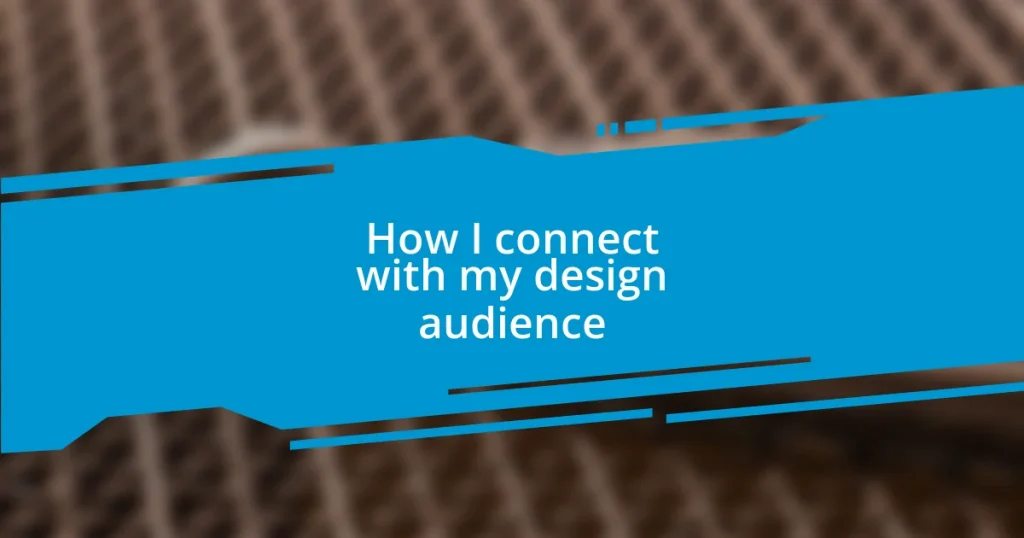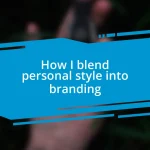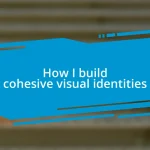Key takeaways:
- Understanding your design audience requires empathy, focusing on their values and emotions, not just demographics.
- Building an engaging online presence involves authenticity, consistency, interaction, and collaborative content creation to foster community and connection.
- Gathering and responding to feedback is essential for growth, enhancing designs based on audience insights, and creating a sense of shared ownership in the creative process.
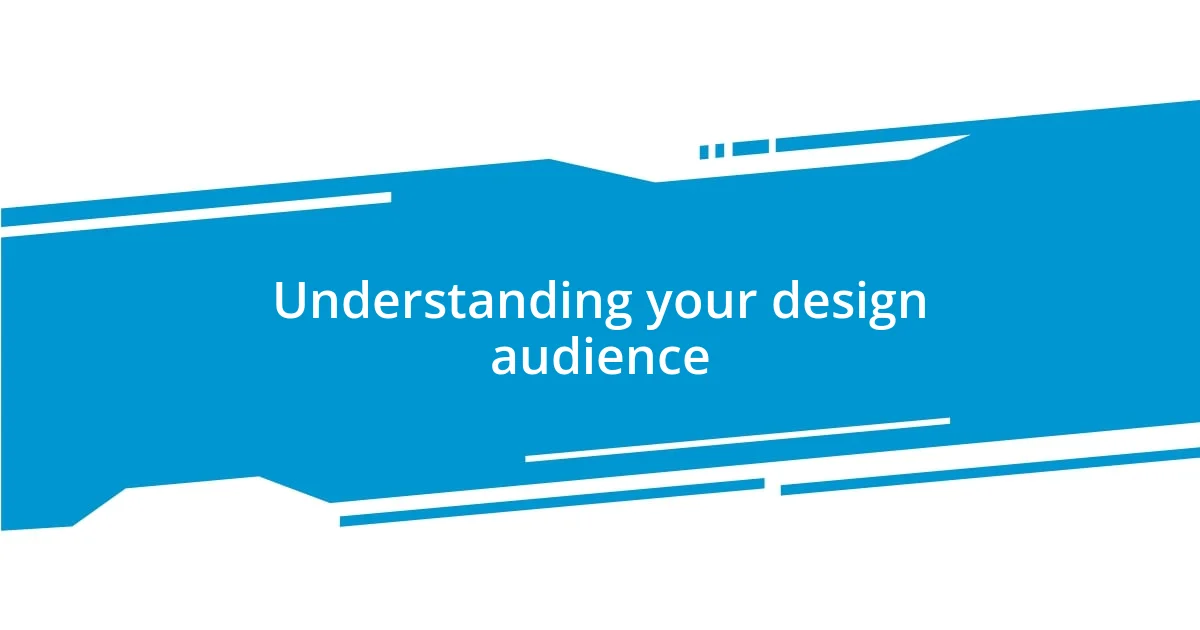
Understanding your design audience
Understanding your design audience begins with empathy. I remember a time when I designed a project aimed at young parents. I assumed they would prioritize functionality, but what quickly became clear was their emotional need for aesthetics that feel nurturing. This revelation was a turning point for me; it made me realize that understanding an audience goes beyond demographics—it’s about connecting with their values and emotions.
Have you ever considered what truly drives your audience? In my experience, conducting informal interviews can reveal layers of motivations and fears that statistics just can’t capture. I once spoke with a small-business owner who expressed her struggles with feeling overwhelmed by options. That conversation opened my eyes to how crucial it is to design with clarity and simplicity, so I could speak directly to her pain points.
It’s fascinating how different audiences respond to design elements. For some, vibrant colors evoke excitement; for others, minimalist styles suggest calmness. I once launched a campaign using bold hues, only to receive feedback from a more subdued audience preferring soft pastels. This taught me that truly understanding your design audience means being willing to adapt and evolve based on their reactions, all while staying true to the essence of your own creative vision.
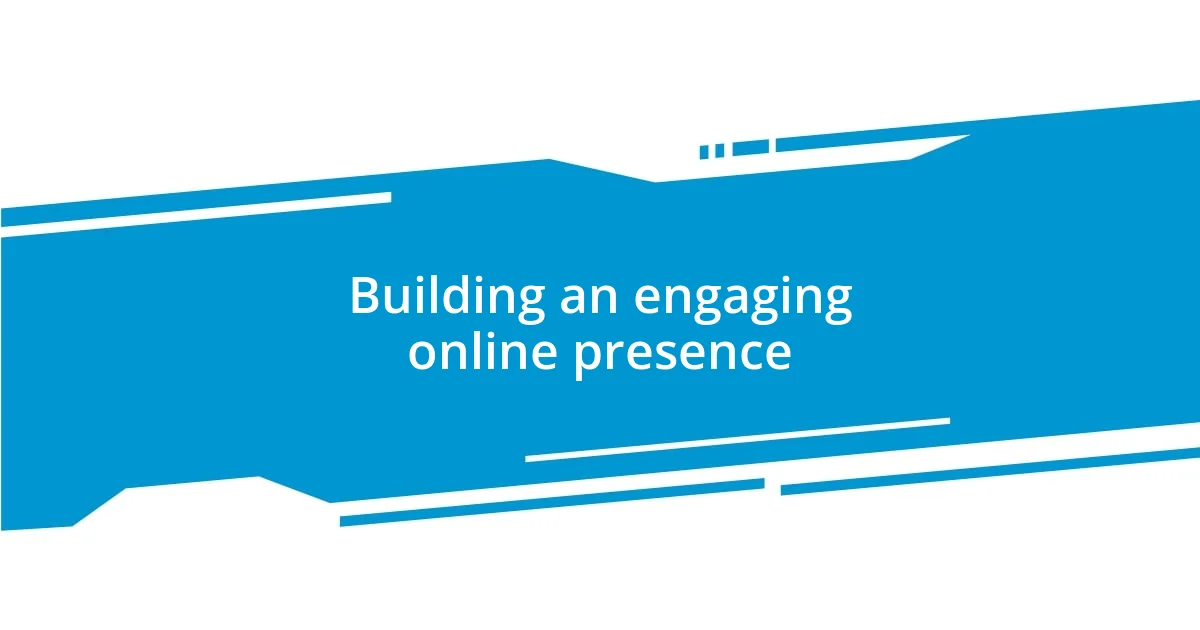
Building an engaging online presence
Building an engaging online presence is about creating a platform that resonates with your audience’s aesthetics and emotions. I recall launching my design portfolio and feeling a rush of vulnerability, knowing it would be my first real connection to potential clients. I initially focused on showcasing my work, but I quickly learned that sharing my creative process, challenges, and even my failures made my audience feel more connected and engaged. It’s like inviting them into my design journey, making them partners in my artistic exploration.
A few key strategies can enhance your online presence, making it more engaging for your audience:
- Authenticity: Show your true self. Share behind-the-scenes details that reveal your personality and values.
- Consistency: Regularly post content that aligns with your brand and speak directly to your audience’s interests.
- Interaction: Encourage comments and respond thoughtfully. This two-way communication builds trust and fosters a community.
- Visual Storytelling: Use compelling visuals and narratives to convey your message. People connect with stories, not just products.
- Feedback Loop: Actively seek feedback on your designs and posts. Understanding what resonates can guide your future efforts.
These approaches have not only enriched my engagement but also allowed me to build lasting relationships with my audience.
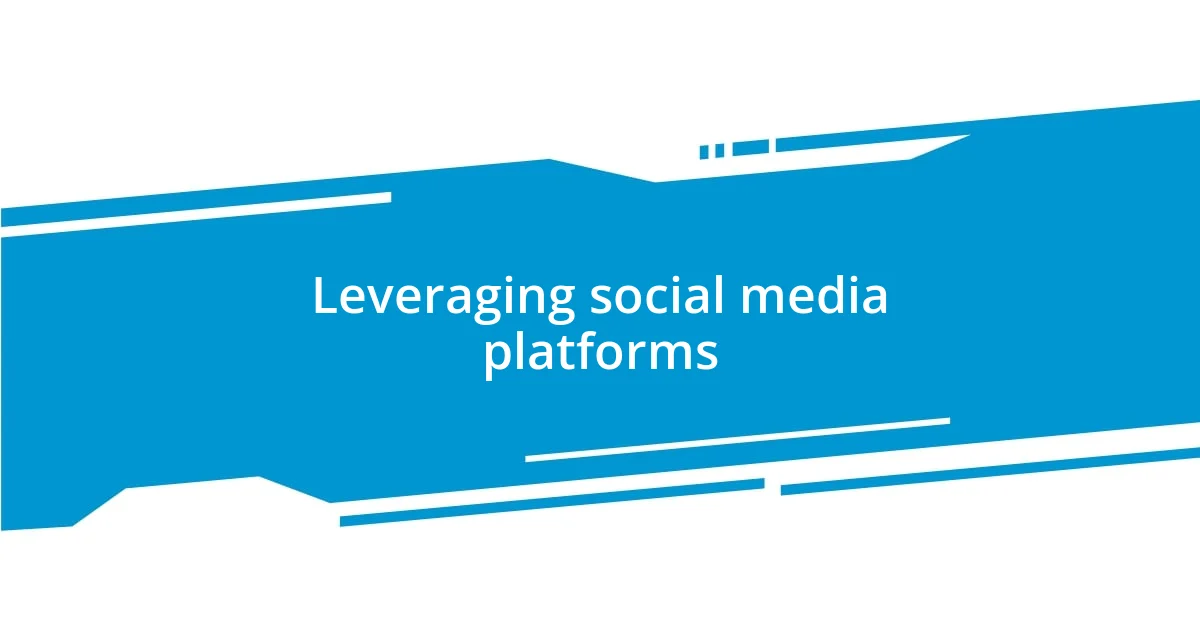
Leveraging social media platforms
Leveraging social media platforms is essential for connecting with my design audience effectively. I vividly remember my first Instagram post showcasing a recent project. I was nervous, wondering if it would resonate with anyone. To my surprise, the post ignited a cascade of likes and comments, offering insights into what my audience valued. It made me realize that showcasing my design process, paired with relatable stories, transformed an ordinary post into a conversation starter. Engaging with my audience in real-time showed me how powerful social media can be in building relationships.
When it comes to different platforms, I’ve found that each offers unique ways to connect. For instance, Twitter allows for quick updates and engagement, while Pinterest serves as a visual inspiration board. I once used Pinterest to gather feedback on a color palette for a client’s brand, and the overwhelmingly positive response solidified my direction. This kind of interactive engagement helps me stay in tune with what my audience appreciates.
| Platform | Best Use |
|---|---|
| Visual storytelling, showcasing designs | |
| Real-time updates, quick engagement | |
| Inspiration and feedback on visual concepts |
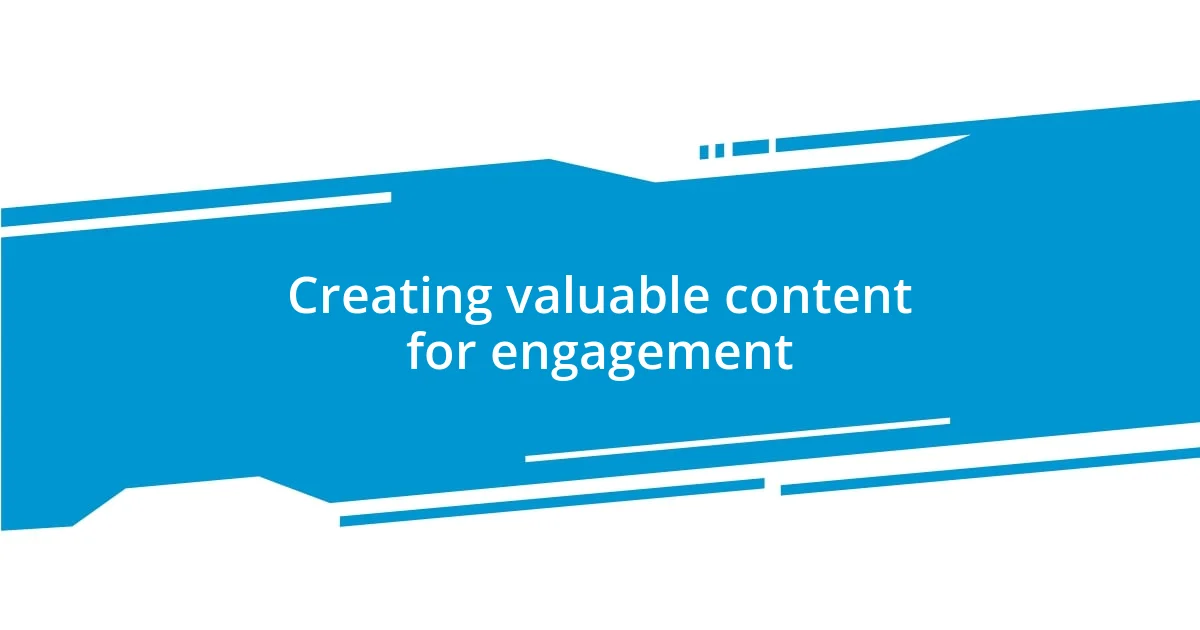
Creating valuable content for engagement
Creating valuable content for engagement goes beyond simply sharing designs; it’s about crafting narratives that resonate with my audience. I remember once posting a behind-the-scenes video of a design project that showcased not just the polished end result, but the trials and errors I faced along the way. I was touched by the flood of messages from followers who related to my struggles, creating a sense of camaraderie. How often do we feel isolated in our creative challenges? That shared vulnerability can foster authentic connections and elevate engagement.
Engagement thrives on the notion of community, and I’ve found that inviting my audience to participate in the content creation process makes them feel invested. For example, I launched a poll asking for suggestions on my next design project, and the enthusiastic responses surprised me. It’s fascinating how people become more involved when they see their ideas take shape. Have you ever wondered how much more engaged your audience could be if they felt a part of your journey? This collaborative approach not only enhances my relationships with my audience but deepens their loyalty to my brand.
Moreover, using varied content formats can amplify engagement significantly. One time, I transformed a static design into an interactive Instagram story, where followers could choose colors for a new project. The excitement was palpable, and I received a burst of feedback. It made me realize the power of dynamic content in engaging my audience. Do you leverage different formats in your content? Experimenting with videos, polls, and infographics can breathe fresh life into your engagement strategy. The more interactive I make my content, the more my audience thrives—and so does my connection with them.
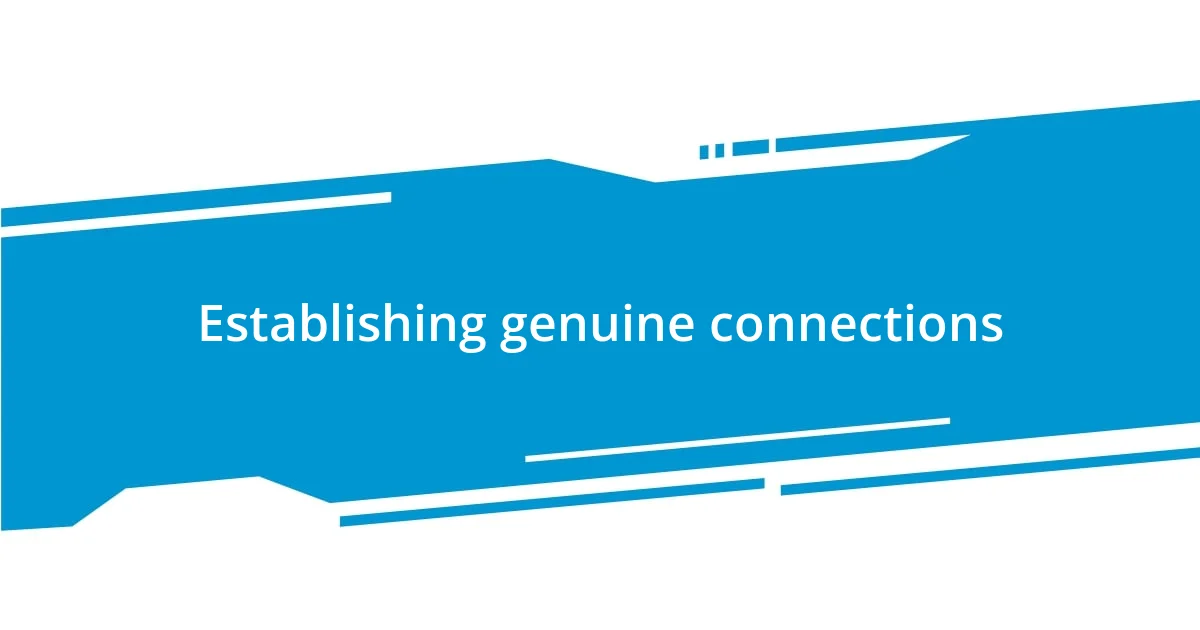
Establishing genuine connections
Establishing genuine connections requires a sincere approach that goes beyond mere interactions. I once participated in an online design conference where I shared insights on a project I was passionate about. To my surprise, several attendees reached out afterward, sharing their thoughts and experiences related to the topic. That moment felt like a warm embrace, reinforcing how much we could learn from one another. Have you ever experienced that spark of connection when discussing shared interests?
Another powerful way to cultivate these authentic relationships is through consistent follow-ups. I remember when I started following up with those who engaged with my content regularly. A simple message acknowledging their input not only made them feel valued but also transformed my online presence into a community. It’s rewarding to see how those small gestures can bridge gaps and create lasting bonds—why not give it a try in your own interactions?
It’s also crucial to be vulnerable and share personal stories that resonate on a deeper level. When I opened up about my creative blocks in a blog post, the responses were overwhelming. Many shared their own struggles, leading to heartfelt exchanges that revealed our shared humanity. Isn’t it liberating to find comrades in our challenges? By shedding the polished facade and letting my audience see my true self, I’ve built connections that go beyond the surface.
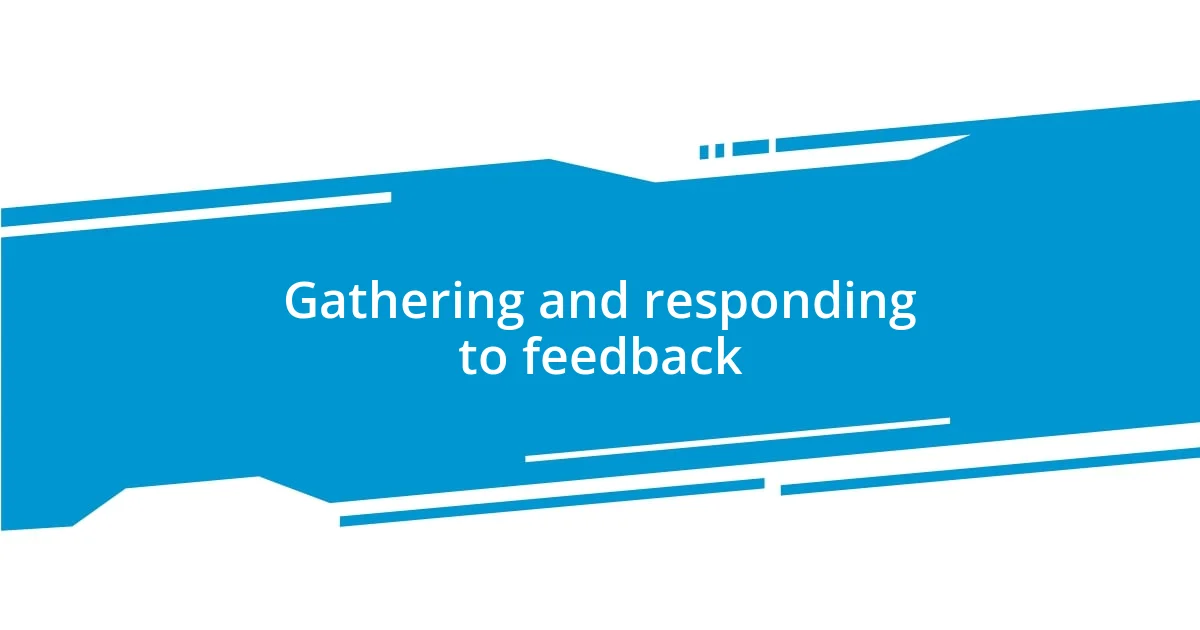
Gathering and responding to feedback
Gathering feedback is a dynamic process that I find essential for growth in my design journey. Recently, I implemented a feedback loop by creating a dedicated space in my online community for my audience to share their thoughts on my latest projects. The responses came pouring in—from constructive criticism to heartfelt praise—and that opened up a dialogue I hadn’t anticipated. Have you ever felt the thrill of discovering ideas you hadn’t considered simply because you asked for feedback?
Responding to that feedback is just as crucial as gathering it. I make it a point to acknowledge every comment and suggestion, and when something resonates, I turn it into a tangible change in my work. For instance, after receiving several suggestions on improving accessibility in my designs, I dove deeper into the topic and subsequently reworked a few projects. The expressions of gratitude from my audience reinforced my belief that engagement isn’t one-sided; it’s a meaningful conversation. Isn’t it amazing how that little act of listening can transform your designs and deepen your connection with your community?
In essence, the impact of feedback can be profound, shaping not only my design process but also how my audience perceives their role in it. I once conducted a design review session live, encouraging my followers to critique my work as I presented it. The energy was electrifying! Their insights helped me see my designs through fresh eyes. It’s a unique experience to witness your audience become your co-creators—how inspiring is it to turn your connection into a collaborative effort? This not only enhances my work but also strengthens the bond I have with my audience, making them feel more invested in what I do.
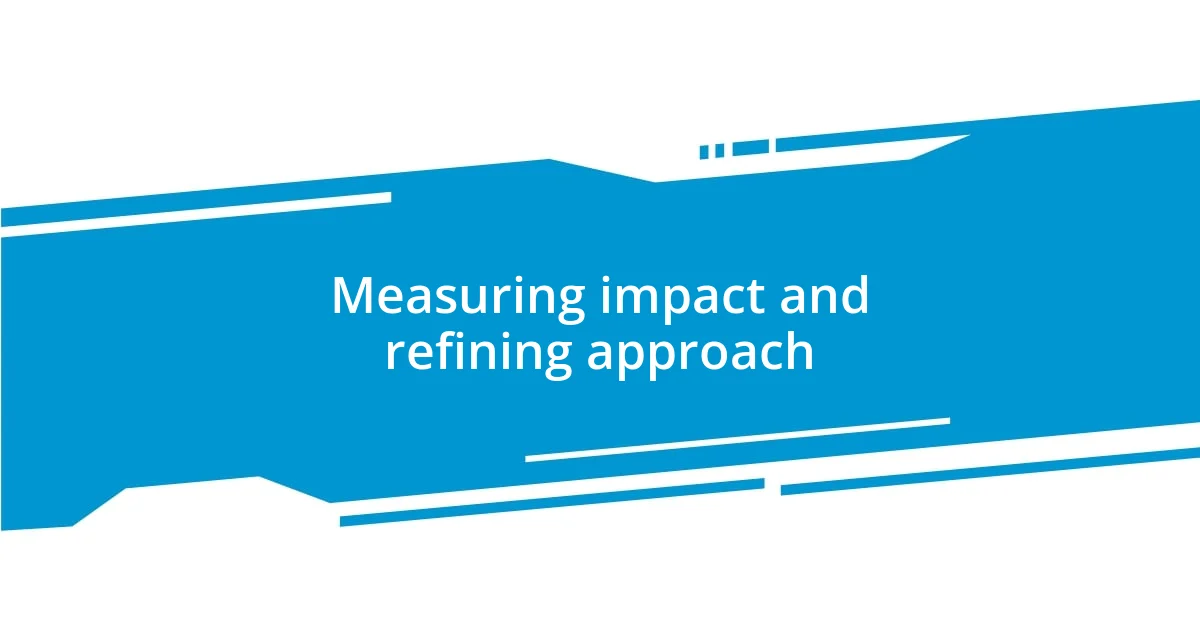
Measuring impact and refining approach
Assessing the impact of my design outreach involves both quantitative and qualitative measures. I often review engagement metrics after releasing a new project—likes, shares, and comments tell part of the story. However, I also relish diving into the emotional feedback, notes from followers expressing how my work inspired them or helped them through a tough time. Have you ever stopped to consider how your audience feels about your work? That’s where the real magic happens.
One method I use to refine my approach is conducting surveys that delve deeper than surface-level feedback. I’ll ask open-ended questions about what they enjoy and what could improve. I remember feeling a bit nervous the first time I sent a survey, but the responses were enlightening. One particular comment highlighted a need for more behind-the-scenes content, which sparked a new series that my followers now eagerly anticipate. Isn’t it fascinating how a simple question can shape the path of your creative journey?
Turning insights into actionable changes is essential for keeping my designs relevant. After analyzing my latest project’s performance, I realized the color scheme didn’t resonate as strongly with my audience. A quick pivot to brighter, bolder shades transformed my engagement levels significantly. The excitement in my community was palpable—how rewarding it is to see your work evolve based on genuine input! It feels like a constant dance, where measuring impact and refining my approach leads to richer connections with those who appreciate what I create.










